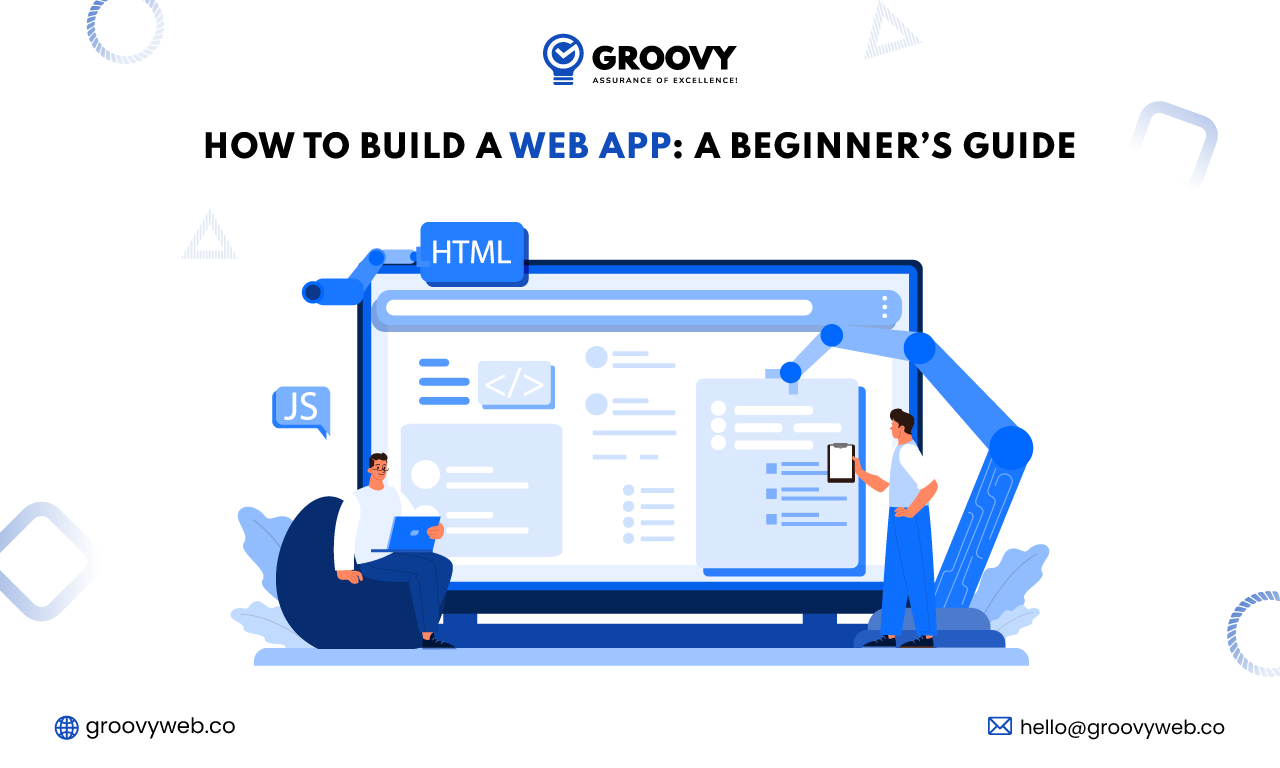How to Develop Cross-Platform App with Latest Tools and Frameworks
Nauman Pathan
October 16, 2023 936 Views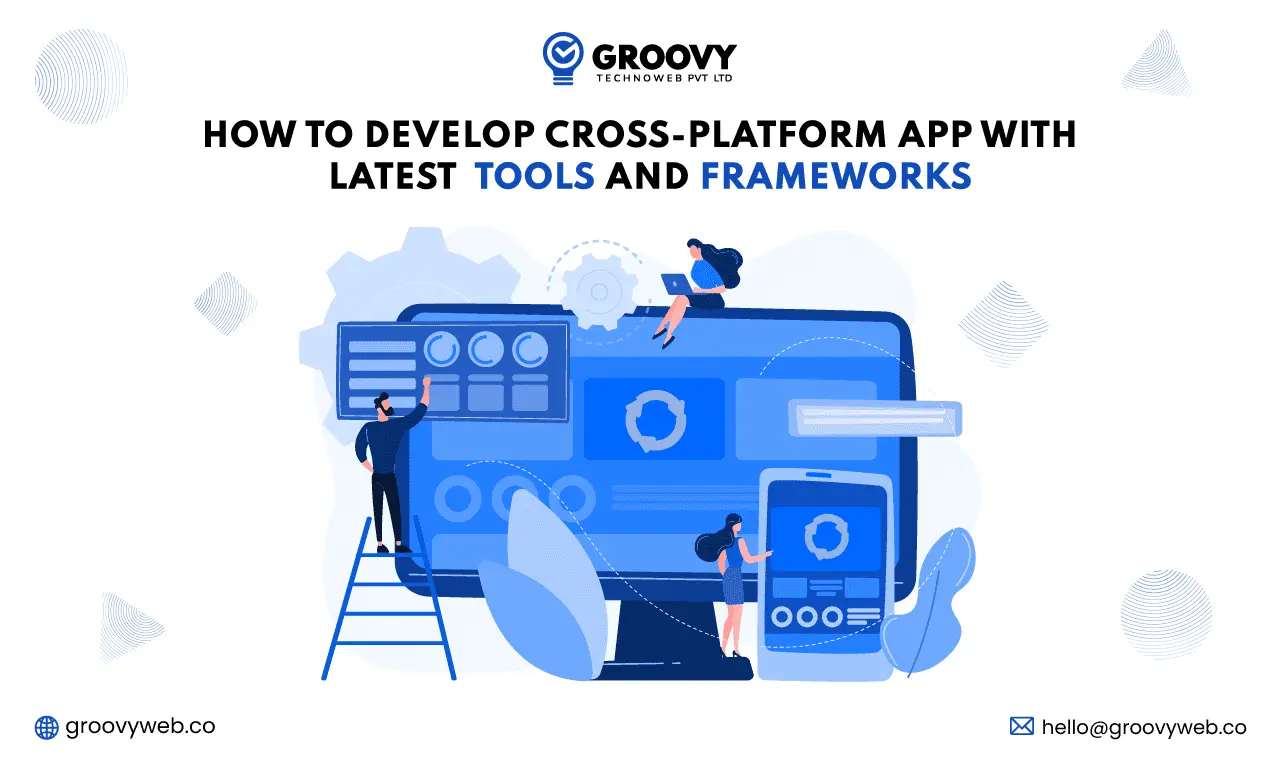
Quick Summary : Cross-platform app development has never been easier. Learn how to develop powerful, feature-rich apps using the latest tools and frameworks with our step-by-step guide.
Mobile apps have become a necessity for many businesses across industries. It is essential that such applications run smoothly across multiple platforms, such as iOS, Android, and Windows. You can build such a solution quickly and cost-effectively.
In today’s dynamic world of mobile app development, businesses don’t risk missing out on having a presence on either platform: the Google Play Store or the Apple App Store. However, budgeting is often a problem if businesses switch to native apps. On both Android and iOS the cross platform app development has become an unrivaled option for businesses aiming to have a presence.
Here’s a list of key tools and frameworks commonly used for cross-platform app development as of my last knowledge:
- React Native: A JavaScript framework for building mobile applications that can run on both iOS and Android.
- Flutter: An open-source UI framework by Google for building natively compiled applications for mobile, web, and desktop from a single codebase.
- Xamarin: A Microsoft-owned platform for building native mobile apps using C# and .NET.
- Ionic: An open-source framework for building mobile and web applications using web technologies like HTML, CSS, and JavaScript.
- Appgyver Composer: A low-code platform for building cross-platform apps with a visual development environment.
- Apache Cordova (PhoneGap): A platform for building native mobile applications using HTML, CSS, and JavaScript.
- Electron: A framework for building cross-platform desktop applications using web technologies.
- Microsoft MAUI (Multi-platform App UI): A .NET MAUI is a cross-platform framework for building native mobile and desktop apps using C# and .NET.
- Nativescript: An open-source framework for building native mobile apps using JavaScript or TypeScript.
- Kotlin Multiplatform: Kotlin Multiplatform allows you to share code between Android and iOS apps while still writing platform-specific code when necessary.
- Apache Pivot: A platform for building rich internet applications and applets with Java.
- Unity: A popular game development engine that can be used for building interactive 2D and 3D applications across various platforms.
- Adobe PhoneGap Build: A cloud-based service that makes it easy to compile your PhoneGap apps in the cloud.
- Sencha Ext JS: A JavaScript framework for building cross-platform web applications with a rich set of UI components.
- Qt: A C++ framework for building applications that run on various platforms, including desktop, mobile, and embedded systems.
- Kivy: An open-source Python framework for developing multitouch applications.
- Felgo: A cross-platform framework for building 2D games and apps using the Qt framework.
Statista shows the number of mobile apps available in popular app stores as of Q2 2023:
- Google Play — 2,870,000
- Apple Store — 1,960,000
- Windows Store — 6,69,000
- Amazon Appstore — 4,50,000
Explanation of How to Develop Cross-Platform App
The terms “cross-platform mobile app development” or “hybrid mobile app development” speak for themselves: this is an approach that allows developers to create mobile solutions that are compatible with each other Operating systems and platforms (Android, iOS, Windows).
It will have a native look and feel due to a combination of native and independent code that fits across platforms. Developers write code once and reuse it. Therefore, it can release products quickly.
Developers use intermediate programming languages like HTML, JavaScript, and CSS that are not native to the device and operating system in cross-platform software coding. Apps are then packaged into native containers and integrated into the platform.
Nowadays this cross-platform mobile development is the creation of software applications that are compatible with multiple mobile operating systems that work on multiple platforms but this is time-consuming and expensive; it is often easier to create native applications for each mobile operating system (OS). The problem is that code created for one operating system cannot be reused for another operating system.
It is very easier for programmers to develop cross-platform apps. New approaches to cross-platform development include:
- Hybrid Mobile App Development – Developers write the core of the application as an HTML5 or JavaScript mobile app and then place native device wrappers around it.
- Rapid Mobile App Development (RMAD) – Using no-code programming tools, RMAD enables business users to quickly create and manage “good enough” in-house apps to solve their business problems. be specific
- Universal Windows App – One code base for all Windows devices. The important goal is enabling the same app to run on your Windows PC, tablet, Smartphone, smartwatch, or Xbox.
- Progressive Web Apps – Websites that look and function as if they were mobile apps. This is important built to take advantage of native mobile features without requiring users to go to the app store buy and download the software locally PWA iOS app development.
Pros and Cons of Cross-Platform App Development
| Pros | Cons |
| Sharable code | Performance issues |
| Faster development | Poorer design |
| Cost effective | Limited functionality |
| Wider audience | Updating delay |
| Native feel and look |
Advantages of Developing Cross-Platform Apps
Cross-platform apps provide the benefit of reaching a wider audience. These apps can be developed on multiple platforms and still work together seamlessly. This allows businesses to target audiences on multiple platforms instead of just one. It also makes it cost-effective to market by creating more than one app with the same audience.
Cross-platform apps help businesses Benefit from both the Google Play Store (Android) and the Apple App Store (iOS), which allow businesses to earn more sales in an increasingly competitive marketplace.
#1. Faster Updates and Flexibility
Compiling code faster is a key benefit of cross-platform application development. Developers can share code across platforms easily when using the same programming language. The cross-platform app is built with technology that allows switching between languages. It also gives developers the flexibility to adopt other technologies to be used when necessary.
#2. You need not to hire developers for each platform
It will use a single codebase and common APIs, there’s no need to outsource development teams for different platforms and this led to a reduction in the number of developers. This result in lower total development costs with cross-platform app development Businesses, therefore, do not have to worry about over budgeting.
#3. It reduces the time and cost of app development
When it’s time, cross-platform applications reduce the time spent on development; not only does it take less time overall, but it also reduces the time spent on maintenance and updates Because one team will be responsible for all versions of your application instead of multiple teams like native developers need. This makes it ideal for fast-starters who want a quick presence on multiple platforms with just one app.
#4. Easier use
Consistency is a boon for users and developers. With the help of React Native and Flutter, the app development process is streamlined in a way that is easier to develop across multiple platforms and devices. These platforms are built to build high-quality native apps on Android and iOS using a single code base.
#5. Uniform design
Developing mobile applications for multiple devices can be a tedious task. You don’t just need to create separate apps on both Android and iOS platforms, but users need to see the same look and feel of the application. This can become a problem, especially when you consider that these platforms offer different functionality.
This is where cross-platform app development for Android and iOS devices can help you develop apps for multiple devices. It will look and feel similar regardless of the platform used for access.
Overview of latest tools and frameworks for cross-platform development
A cross-platform app development framework is a set of tools that help you build native or native apps for multiple platforms like Android, iOS, Windows, and the web with a single codebase. This allows you to extend your reach to a larger audience across multiple platforms with significantly reduced costs and less time.
React Native
React Native is based on Facebook’s React JavaScript library, which renders the native platform UI. React Native is a great choice for simple apps where the API provides a clear cross-platform bridge. Native code is often necessary to reduce gaps in performance.
Xamarin
Xamarin offers excellent compile-time validation, which helps developers encounter fewer runtime errors. Xamarin integrates with Visual Studio, Microsoft’s IDE, for the .NET Framework, allowing Visual Studio to be used to build applications for Android, iOS, and Windows.
Codename One
It is one of the best revolutionary mobile development solution started by former Sun Microsystems developers following work started within Sun. Its highlight is unlimited native access to the platform. It allows developers to write native code directly from Java or Kotlin and access everything a native mobile platform can offer.
Flutter
According to the 2020 Stack Overflow developer survey, Flutter is the third most liked framework. The Flutter framework, including the Dart language, has not been around for a long time. Flutter has a strong following in the cross-platform community as a versatile SDK for mobile app development.
Ionic
The Ionic framework uses SaaS UI and is built based on Cordova. It can use Cordova and Capacitor plugins to access native OS features like camera, GPS, flashlight, etc and it has its own IDE called Ionic Studio. Ionic also has features like code deployment, auto-build, lazy loading, Ionic CLI, etc.
Cordova
Apache Cordova is an open-source fork of the PhoneGap project, which was acquired by Adobe in 2011. PhoneGap was later discontinued by Adobe in 2020. Apps built with Cordova are hybrid. It means that those apps are not native apps or purely web-based. Depending on the device platform, Cordova enables HTML, CSS, and JavaScript integration and this will rely on standards-compliant API bindings to access each device’s capabilities, such as data, sensors, network status, etc.
NativeScript
NativeScript allows developers to access native Android and iOS APIs and render the platform’s native UI. Although the app’s source code is written in a web language, NativeScript apps run directly on the native device without the need for WebViews or DOM customizations.
NativeScript’s core components are Runtimes, Core Modules, CLI, and Plugins. The Runtime calls native APIs using JavaScript. Core Modules provide an abstraction to access the native platform. The CLI allows apps to be built, built, and run using NativeScript, and its build-unit plugins make things NativeScripts for faster development.
Titanium SDK
Titanium SDK include cross-platform APIs for accessing native UI and device functionality, direct access to native APIs using Hyperloop, and the MVC-based Alloy framework. It will offer pre-built integrations with Salesforce, MS Azure, MS SQL, MongoDB, and Box. It also offers ArrowDB, a schema-free database that lets developers deploy data models without setup. Axway acquired Appcelerator and an open-source, cross-platform application framework, Titanium, in 2016.
Qt
Qt is used for developing cross-platform and graphical user interface (GUI) apps that run on most mobile, desktop, or embedded platforms. Qt supports compilers such as Visual Studio, GCC, and PHP compilers via extensions.
Qt tools include the Qt Creator IDE for C++ and Qt Quick, which provides a declarative scripting language called QML. Some of other features of Qt include XML parsing, JSON parsing, SQL database access, and thread management.
Ruby Motion
The Ruby programming language is mostly used for web development. However, with RubyMotion, you can build mobile apps using Ruby. It is based on MacRuby, an implementation of Ruby previously created and maintained at Apple. RubyMotion modifies and extends MacRuby to run on platforms other than MacOS.
Apps written in RubyMotion call native platform APIs and behave in the same way as the platform’s native languages. RubyMotion apps are created from a command line terminal using a text editor.
Various Stages for How to Develop Cross Platform Application
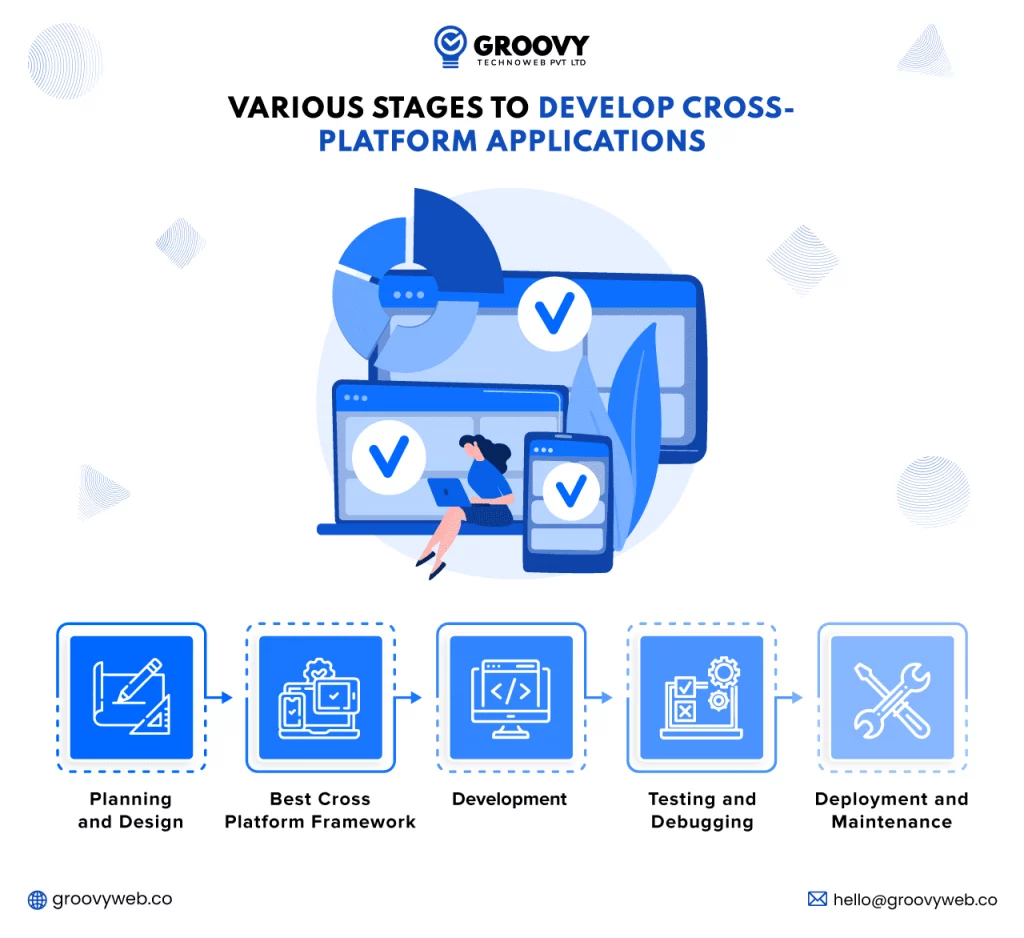
1. Planning and Design
Developing cross-platform applications requires proper planning and design to ensure the final product meets user requirements and delivers a seamless experience. Here are the key steps in planning and designing a cross-platform application:
a. Define Requirements
Understand the target audience, their needs, and the key features that the application should have to meet those needs. Determine the platform on which the application will run and select the development framework accordingly.
b. Create a Wire Frame
Develop a Rough Sketch of the application’s interface to visualize how the application will look. Layouts help identify design flaws and usability issues.
c. User Interface Design
Create an attractive and user-friendly interface that aligns with your brand style and values and graphics that conform to platform guidelines and user expectations.
d. Prototyping
Develop clickable prototypes that simulate application behavior and navigation flow. Use the prototyping tool to make quick design changes and test with potential users.
e. Get Feedback
Test prototypes with a small group of users. To understand their experience, gather feedback, and make necessary adjustments to the design.
f. Final Design
Gather suggestions and make final design decisions. Create a style guide that documents the elements and design guidelines of the application to ensure consistency throughout the application.
Proper planning and design are the foundation for a successful cross-platform application development project.
2. Selecting a Cross-Platform Framework
Choosing a cross-platform framework can be a daunting task for any developer or team, with so many options available in the market. It is important to understand the pros and cons of each framework. To make the right decision for your project, we will give you an overview of popular cross-platform frameworks: React Native, Flutter, and Xamarin.
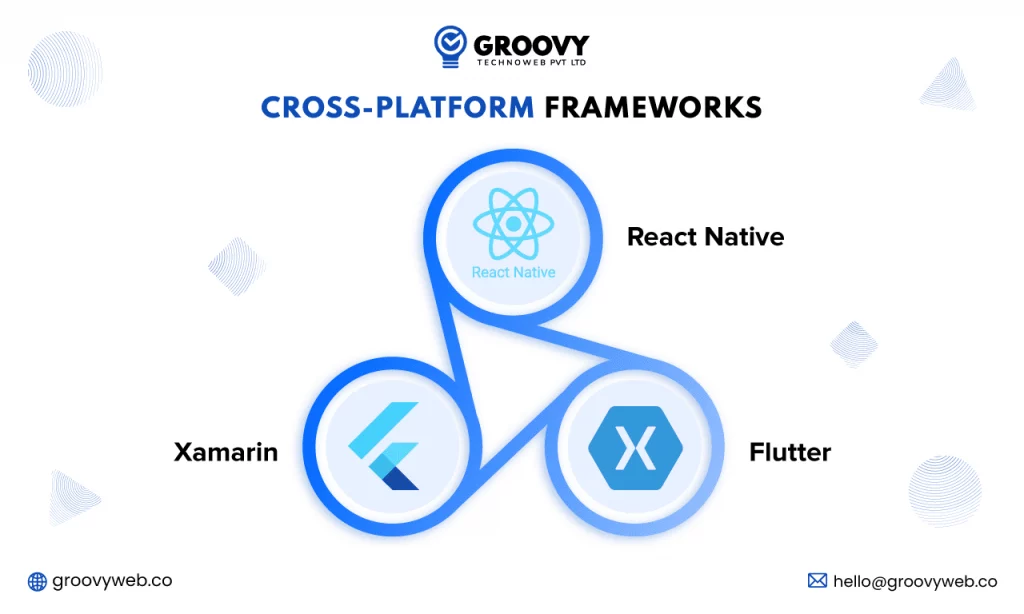
I. React native
It is one of the popular open-source frameworks for building cross-platform mobile applications. It allows developers to use the same codebase for both iOS and Android platforms, reducing development time and cost. React Native uses JavaScript and provides a native user experience making it a popular choice for many developers. The pros and cons of React Native are given by,
Pros
- It supports hot reloading for faster development.
- There are many third-party libraries and tools for building complex applications.
- Allows easy integration with existing legacy components
- Provides strong community support and extensive documentation
Cons
- A consistent user interface may not be available across devices and platforms.
- May experience performance issues with complex UI animations and heavy processing.
- Limited support for complex functions and native APIs.
II. Flutter
Flutter is another open-source, cross-platform framework for building mobile applications. It uses the Dart programming language and offers a fast and reliable development experience. Flutter helps developers build visually appealing and engaging applications using customizable widgets. Some of the pros and cons of Flutter are:
Pros
- It provides a consistent user interface across devices and platforms.
- It offers a fast development experience with features such as Hot Reload and a customizable widget catalog.
- It provides strong support for complex animations and graphics.
- It Provides access to native APIs and rich functionality.
Cons
- Limited third-party library support compared to React Native.
- Relatively new framework with limited community support.
- There can be a steep learning curve for developers unfamiliar with the Dart language.
III. Xamarin:
Xamarin is a popular cross-platform framework for building mobile applications. It uses C# as the programming language and provides access to native APIs and functions. Xamarin helps developers create native experiences for both iOS platforms And Android. Some of the pros and cons of Xamarin are:
Pros
- It Offers access to native APIs and functions.
- It provides a consistent user interface across devices and platforms.
- Provides strong community support and extensive documentation
- Allows easy integration with existing legacy components
Cons
- May experience slow development due to long build times
- Limited support for third-party libraries compared to React Native.
- It may have compatibility issues with older devices and operating systems.
Choosing the right cross-platform framework depends on factors such as project requirements, Team expertise, and development time. React Native, Flutter, and Xamarin are popular frameworks in the market and each frame has its own pros and cons. React Native is a great choice for developers looking to build complex applications with support for many third-party libraries.
Flutter is a great choice for developers who want a fast and reliable development experience. With access to native APIs and functionality, Xamarin is a great choice for developers looking to build native experiences for both iOS and Android platforms with access to native APIs and functionality.
3. Development
Development is the stage where the actual coding and testing of the application takes place. Developers use cross-platform development frameworks to write code that can run across multiple operating systems and devices. During this process, Developers must ensure that the features and functionality of the application are compatible with the target platform and application performance is optimized for each device.
Developers also need to thoroughly test applications to ensure they work properly and provide a seamless experience across all platforms. Automated testing tools are commonly used to ensure consistent performance across devices and operating systems.
Once the code is written and tested, Developers can integrate applications with different app stores and deployment channels. Applications go through a review process before they are available for public download.
The development phase is critical to the success of cross-platform application development. It involves collaboration between designers, developers, and testers to ensure that applications meet user needs and provide a consistent and reliable user experience across platforms.
4. Testing and Debugging
Testing and debugging are essential parts of the development process in cross-platform app development. The cross-platform apps are developed to work on multiple platforms. This creates unique challenges in testing and debugging. Here are some important considerations for testing and debugging in cross-platform app development:
5. Testing
Testing should be performed on the device, operating system, and browsers to ensure compatibility and consistent performance. Automated testing tools can be used to test the functionality and performance of your app across multiple platforms at the same time.
1. Debugging
Developers must use debugging tools and techniques to identify and fix problems that arise during testing. Cross-platform app development frameworks often come with built-in debugging tools that allow developers to identify and fix problems in real-time.
2. Emulators and Simulators
Emulators and simulators can be used to simulate different device configurations and test the app’s performance on various platforms without the need for real equipment.
3. User feedback
Gathering user feedback is essential to identifying and resolving issues that arise during testing. User comments can be used to identify bugs, usage problems, and other problems that may occur during the life cycle of the app.
The testing and debugging are essential elements of the development process in cross-platform app development. Testing and debugging must be done on the device, operating system, and multiple browsers to ensure apps are compatible and deliver consistent performance across platforms.
6. Deployment and Maintenance
Cross-platform app development lets you build apps that run on multiple operating systems with a single codebase. This reduces development time and cost. However, deploying and maintaining apps across platforms can be challenging due to differences in underlying technology across platforms. Here are some important considerations when deploying and maintaining apps across platforms:
- Choose the right development framework
The framework you choose should support the features and functionality your app needs and allows you to deploy to multiple platforms. Popular cross-platform frameworks include React Native, Xamarin, Flutter, and Ionic.
- Thorough testing
Test your app on each target platform to ensure it performs as expected and meets each platform’s design guidelines and performance requirements. The automated testing tools can help speed up the testing process.
- Use platform-specific UI elements
To give your app a sense of ownership on each platform, Use platform-specific UI elements such as buttons, icons, and navigation styles.
- Track Platform Updates:
Track each platform’s updates and make sure your apps remain compatible. Also, be on the lookout for new features and functionality that you can take advantage.
- Regularly review and update:
Regularly review app performance and user feedback and update the app as necessary to fix bugs, add new features, and improve usability.
- Use analytics tools:
You can use analytics tools to track user engagement and behavior across platforms. This information can help you optimize your app and improve the user experience.
The deploying and maintaining apps across platforms requires careful planning, testing, and ongoing maintenance. By following best practices and constantly monitoring changes to each platform. You will be able to build successful cross-platform apps that deliver great user experiences.
The major difference between the native and cross-platform
| Factors | Native app development | Cross app development |
| Cost | It is platform specific and consistent UI/UX | It is unified UI/UX for all platforms |
| Code reusability | It is platform dependent | You can use single code in multiple platform |
| UI/UX | Platform specific and consistent UX/UI | Minimal consistency and unified UI/UX for all platforms |
| Performance | It is completely native performance | It is native like performance and high performance |
| Target audience | Only in single platform | It will reach out to a huge amount of people |
Characteristics of Cross-Platform App Development
Nowadays you can maintain and update cross-platform applications in a single programming language regardless of the target device’s operating system. Since it is built in the same language only minor modifications are required to make it compatible with all devices.
Although they offer great performance and a high level of customization, each project and concept must be evaluated before choosing the best option. As you can see, developing cross-platform apps has never been easier through advancements in technology and software creation.
The current situation of develop cross-platform app
According to Statista, Developers Worldwide surveyed in 2021, and more than 6 out of 10 respondents reported targeting the web and Windows for cross-platform software development and 53% of respondents reported that they were targeting Linux, while 47% reported that they were building multiplatform software for Android.
As of 2021, Flutter is the most prevalent cross-platform mobile framework developer’s use worldwide. According to a 2021 developer survey by Statista, 42% of developers surveyed use Flutter.
Statista is a company specializing in market data. Given the data on mobile operating system releases for software development worldwide in 2022, you can see that iOS and Android account for 45%, while Android alone accounts for 41%, 11% of iOS, and 2% of other mobile OS platforms.
Another piece of data from Statista shows the number of mobile apps available in popular app stores as of Q2 2023:
- Google Play — 2 870 000
- Apple Store — 1 960 000
- Windows Store — 669,000
- Amazon Appstore — 450,000
Although 2023 is going to be a tough year for almost every business, it doesn’t look like 2023 will affect the mobile app market. According to Sensor Tower, global app revenue topped $50 billion in the first half of 2023 worldwide with applications in the Google Play Store and the Apple Store, and the company said an increase of 23,4% compared to 2019.
Suppose you want to fully influence the mobile application market you should target both Android and iOS users. There are two reliable ways to achieve that — through native and cross-platform development tools.
Conclusion
With the help of cross-platform application development, Businesses will be able to create apps for both the Google Play Store and the Apple App Store. Cross-platform app development also helps companies. Stay ahead of the competition with updates which always ahead of competitors. These are just some of the benefits that come with cross-platform application development.
If you want your business to stay ahead of the competition, Cross-platform development is essential for your business. If you are looking for the best Cross-Platform app development company near me, we are the best in industry that you can choose for expert services.
Written by: Nauman Pathan
Nauman Pathan is a Project Manager at Groovy Web - a top mobile & web app development company. He is actively growing, learning new things, and adapting to new roles and responsibilities at every step. Aside from being a web app developer, he is highly admired for his project management skills by his clients.
Frequently Asked Questions
We hope these clear your doubts, but if you still have any questions, then feel free to write us on hello@groovyweb.coWhat are the latest tools and frameworks used in cross-platform app development?
- React Native
- Xamarin
- Flutter
- Ionic
- PhoneGap
Above mentioned frameworks are latest and most popular to develop native and cross-platform application
What are some common challenges in cross-platform app development and how can they be addressed?
Developing cross-platform apps frequently presents the following difficulties:
- Restrictions particular to platforms
- Performing poorly
- Adaptation to the hardware and characteristics of the device
- Continuity of design across several platforms
These difficulties can be overcome by cautious planning, thorough testing, and the application of tools and frameworks that deliver strong performance and assistance for platform-specific functionality.
Related Blog
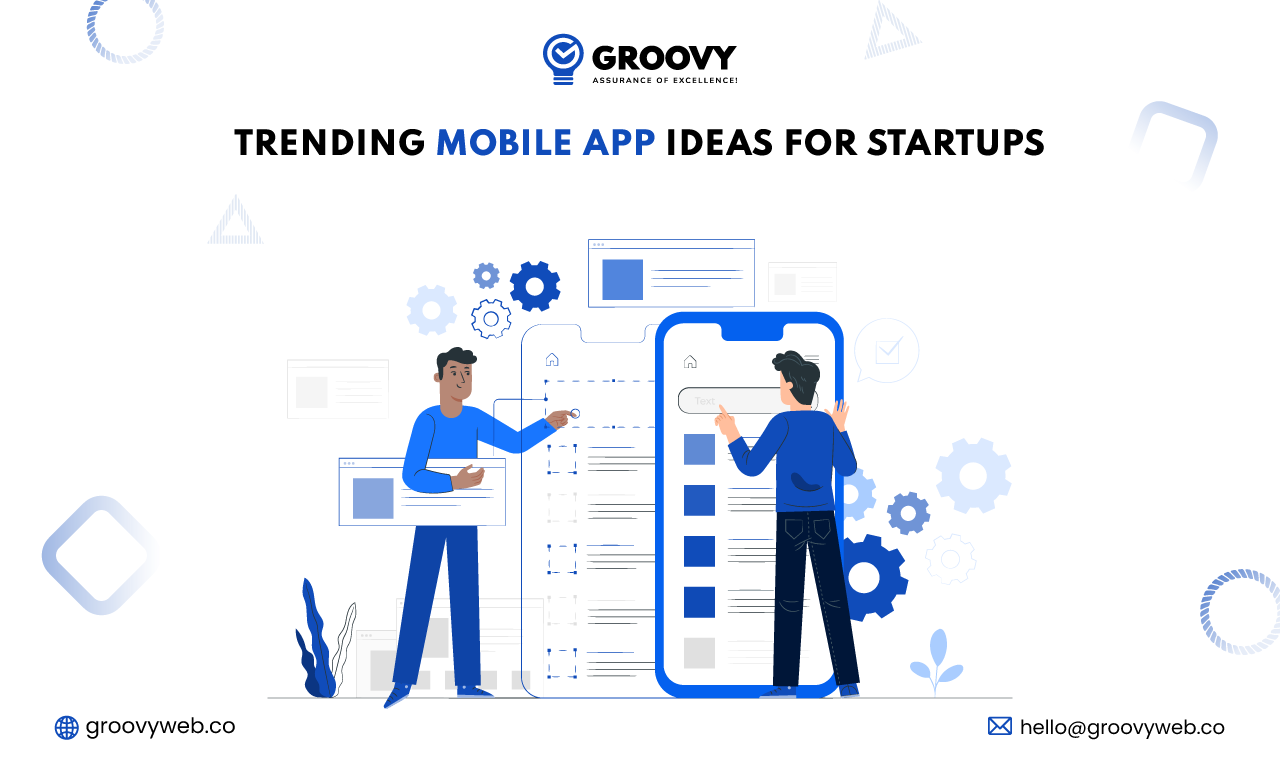
Krunal Panchal
Trending Mobile App Ideas for Startups in 2023
Mobile App Development 02 Feb 2023 39 min readSign up for the free Newsletter
For exclusive strategies not found on the blog
